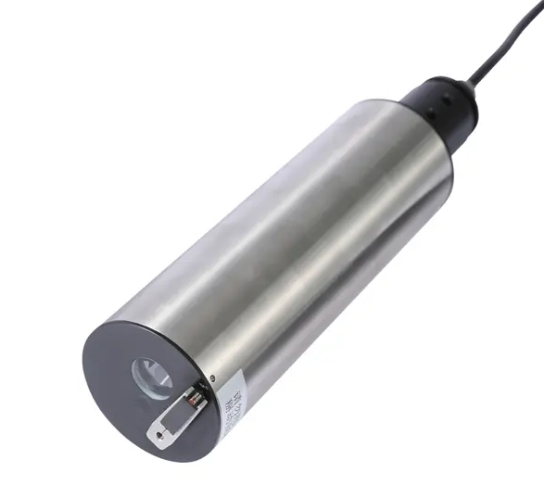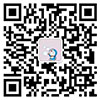In an era where environmental sustainability is paramount, monitoring water quality has become a critical task. One technology that has revolutionized this field is the IoT digital turbidity sensor. These sensors play a pivotal role in assessing the clarity of water in various applications, ensuring that it meets the required standards.
The IoT digital turbidity sensor from Shanghai BOQU Instrument Co., Ltd. represents a significant leap forward in water quality monitoring. Through meticulous microcontroller integration, calibration, testing, and data processing, this sensor delivers accurate and actionable data that can have a profound impact on water management and environmental stewardship. As IoT technology continues to advance, innovations like these promise a brighter and more sustainable future for our planet.
Latest IoT Digital Turbidity Sensor: Defining Requirements
1. Latest IoT Digital Turbidity Sensor: Application and Environmental Conditions
Before embarking on the sensor selection and design journey, it is crucial to identify the specific application and environmental conditions in which the turbidity sensor will be employed. Turbidity sensors find applications in a wide range of fields, from municipal water treatment plants to environmental monitoring in rivers and lakes. The environmental factors may include exposure to dust, water, and potentially corrosive chemicals. Understanding these conditions is paramount in ensuring the sensor’s durability and functionality.
2. Latest IoT Digital Turbidity Sensor: Measurement Range, Sensitivity, and Accuracy
The next step is to determine the required measurement range, sensitivity, and accuracy. Different applications demand different levels of precision. For instance, a water treatment plant might require higher accuracy than a river monitoring station. Knowing these parameters helps in selecting the appropriate sensor technology.
3. Latest IoT Digital Turbidity Sensor: Communication Protocols and Data Storage
Incorporating IoT capabilities requires defining communication protocols and data storage requirements. IoT integration allows real-time monitoring and data analysis. Therefore, you must decide on protocols for transmitting data, whether it’s Wi-Fi, cellular, or other IoT-specific protocols. Additionally, you need to specify how and where data will be stored for analysis and historical reference.
Latest IoT Digital Turbidity Sensor: Sensor Selection
1. Latest IoT Digital Turbidity Sensor: Choosing the Right Technology
Selecting the appropriate sensor technology is pivotal. Common options for turbidity sensors include nephelometric and scattered light sensors. Nephelometric sensors measure the scattering of light at a specific angle, while scattered light sensors capture the intensity of scattered light in all directions. The choice depends on the application’s needs and the desired level of accuracy.
2. Latest IoT Digital Turbidity Sensor: Wavelength, Detection Method, and Calibration
Delve deeper into sensor technology by considering factors such as the sensor’s wavelength, detection method, and calibration requirements. The wavelength of light used for measurements can affect the sensor’s performance, as different particles scatter light differently at various wavelengths. Additionally, understanding calibration procedures is essential to maintain accuracy over time.
Latest IoT Digital Turbidity Sensor: Hardware Design
1. Latest IoT Digital Turbidity Sensor: Protective Housing
To ensure the longevity of the turbidity sensor, a protective housing must be designed. This housing shields the sensor from environmental factors such as dust, water, and chemicals. Shanghai BOQU Instrument Co., Ltd. offers robust and durable sensor housings designed to withstand harsh conditions, ensuring reliable and long-lasting performance.
2. Latest IoT Digital Turbidity Sensor: Integration and Signal Conditioning
Integrate the selected turbidity sensor into the housing and include components for signal conditioning, amplification, and noise reduction. Proper signal processing ensures that the sensor provides accurate and reliable measurements in real-world conditions.
3. Latest IoT Digital Turbidity Sensor: Power Management
Lastly, consider power management components, whether it’s batteries or power supplies. IoT sensors often need to operate autonomously for extended periods. Choosing the right power source and implementing efficient power management is crucial to minimize maintenance and ensure continuous data collection.
Latest IoT Digital Turbidity Sensor — Microcontroller Integration: Powering the Sensor
The IoT digital turbidity sensor is a sophisticated piece of equipment that requires seamless integration with a microcontroller for its functioning. The first step in the journey of creating a reliable turbidity monitoring system is selecting a microcontroller that can efficiently process sensor data and communicate with IoT platforms.
Once the microcontroller is chosen, the next crucial step is interfacing the turbidity sensor with it. This involves establishing the appropriate analog or digital interfaces to facilitate data exchange between the sensor and the microcontroller. This step is pivotal in ensuring the accuracy of data gathered by the sensor.
Programming the microcontroller follows, wherein engineers meticulously write code to read sensor data, perform calibration, and execute control logic. This programming ensures that the sensor operates optimally, delivering precise and consistent turbidity measurements.
Latest IoT Digital Turbidity Sensor — Calibration and Testing: Ensuring Accuracy
To ensure the IoT digital turbidity sensor provides accurate readings, calibration is imperative. This involves exposing the sensor to standardized turbidity solutions with known turbidity levels. The sensor’s responses are then compared to the expected values to fine-tune its accuracy.
Extensive testing follows calibration. Engineers subject the sensor to various conditions and turbidity levels to verify its performance. This rigorous testing phase helps identify any potential issues or anomalies and ensures that the sensor delivers reliable results under real-world scenarios.
Latest IoT Digital Turbidity Sensor — Communication Module: Bridging the Gap
The IoT aspect of the turbidity sensor comes to life through the integration of communication modules such as Wi-Fi, Bluetooth, LoRa, or cellular connectivity. These modules enable the sensor to transmit data to a central server or cloud platform for remote monitoring and analysis.
Developing firmware is a critical component of this phase. The firmware enables seamless data transmission, ensuring that sensor data reaches its destination efficiently and securely. This is particularly important for real-time monitoring and decision-making.
Latest IoT Digital Turbidity Sensor — Data Processing and Analysis: Unleashing the Power of Data
Setting up a cloud platform to receive and store sensor data is the next logical step. This centralized repository allows for easy access to historical data and facilitates real-time analysis. Here, data processing algorithms come into play, crunching numbers and providing valuable insights into turbidity levels.
These algorithms can be configured to generate alerts or notifications based on predefined thresholds. This proactive approach to data analysis ensures that any deviations from the expected turbidity levels are promptly flagged, allowing for timely corrective actions.
Conclusion
IoT digital turbidity sensors have become indispensable tools for monitoring water quality in various applications. By carefully defining requirements, selecting the right sensor technology, and designing robust hardware, organizations can enhance their water quality monitoring efforts. Shanghai BOQU Instrument Co., Ltd. stands as a reliable supplier in this domain, offering high-quality turbidity sensors and related equipment, contributing to the global pursuit of clean and safe water resources. With IoT technology, we can better protect our environment and ensure a sustainable future.
Post time: Sep-12-2023





